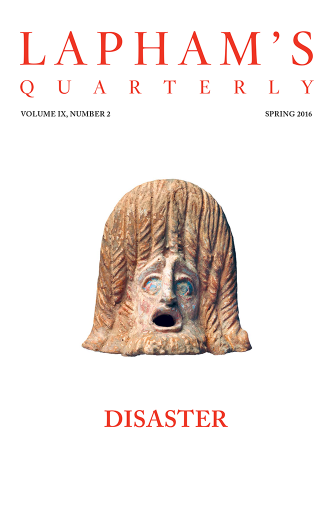October 28
In the dusk of the evening, Reymund Bernard “Dorette” and Peter de Artoys were passing the hostel of William the Tailor. Reymund, entering the house, found William in the solar and charged him with having feloniously sold a certain coat belonging to Reymund. There arose a dispute between them; Reymund attacked William, and Cristina Morel, wife of William, interposing, Reymund struck her with his foot under the navel so that she fell. She lingered until the following Sunday, when she died.
December 5
After the hour of curfew, Hervey, servant of John Wade, was sitting in the house of his master with John Bradequoer, clerk of the said Wade. A dispute arose about a certain strongbox that had been removed from the house. John charged Hervey with its removal, and Hervey called John a liar, whereupon John, being moved to anger, took a piece of wood and therewith struck Hervey on the left side of the head. Hervey lingered until morning and then died of the wound. When John Bradequoer heard his master coming, he went out by the hall door and fled, but whither they know not.
February 1, 1301
After the hour of curfew, a certain costermonger came before the building of Master Gilbert the marshal, crying, “Costard apples for sale.” Copin le Kyng and William Osbern bargained for some of the apples and wished to carry off five of them against the will of the bearer; thereupon he made a noise and clamor. There came Thomas le Brewere, who reprimanded Copin and William for taking the apples against the wish of the vendor, so that angry words arose between them. Thomas struck Copin on the left side of the head with a balkstaff. Copin lingered until Thursday and then died of the wounds at the hour of prime, but they say that Thomas acted in self-defense.
March 12
At the hour of vespers, Joice de Cornwall, pelter, and Thomas de Bristoll, skinner, were playing checkers on a bench in the house of Alice de Wautham when there came Robert de Exeter, Roger de Lincold, and Henry de Lincoln, bringing with them a certain woman over the checkers. Thereupon Thomas found fault with them so that, angry words arising between them, Robert seized Thomas by the shoulders and stripped him of all his clothes down to his girdle. Finding that Thomas had a dagger, Robert seized and drew it. Seeing this, Thomas escaped to a room upstairs. Robert then assaulted Joice, who quitted the house, being followed by Robert, who then struck him with the dagger, inflicting a wound on his chest. Joice proceeded to the church of St. Mary Bothaw but fell in the street and immediately died of the wound.
June 4
After the hour of vespers, Robert le Brasour came into Wood Street and met Robert de Amias. They quarreled together, both being inebriated, and Robert de Amias beat Robert le Brasour with an oak stick. The latter then went toward the church of St. Bartholomew the Little and there lay down on a trunk and passed the night. At sunrise he went to the house of his master, who reprimanded him for leaving without permission, paid him his wages, and ordered him to leave. Robert le Brasour thereupon went to the house of John Butcher and there lingered until Thursday, when he died. They say, however, that he was not nearer death nor farther from life by reason of the beating, but that he died from the illness he contracted by passing the night in the street.
From the Coroners’ Rolls of the City of London. First attested in 1194, the office of coroner was responsible for safeguarding the rights of the crown, a duty that included investigating treasure-trove wrecks and discoveries of sturgeon—as “royal fish,” they were the legal property of the crown—in addition to keeping records of murders and other serious crimes. The cases here are among the earliest of the roughly 460 coroners’ rolls preserved by London’s Public Record Office.
Back to Issue
